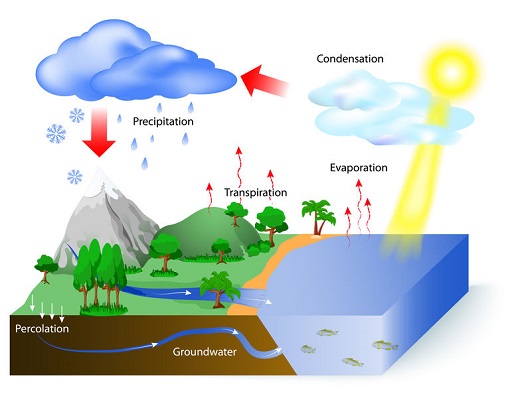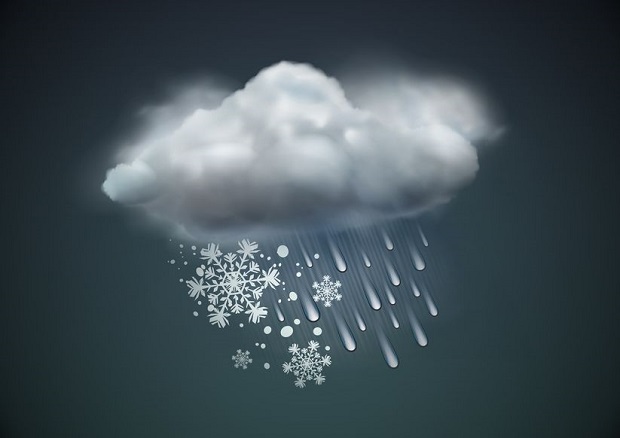
Is Fog Precipitation?
Fog is not a form of precipitation but of condensation. Fog is defined as minuscule water droplets suspended in the air that produce a cloud layer in contact with the ground reducing horizontal visibility to less than 1,000 meters. If visibility is greater, the occurrence is called mist or haze, depending on whether it’s caused by solid particles or water droplets.
How Condensation Works

Condensation is the process by which water vapor turns into a liquid. This can happen when the air is cooled to its “dew point” – the temperature at which condensation occurs. When the air becomes cooler than the dew point, it cannot maintain the high amount of water vapor.
Types of Fog

Fog forms when the relative humidity of the surrounding air surpasses 100 percent. How this condensation occurs depends on the type of fog.
Radiation Fog – The condensation that causes radiation fog is due to a reduction in the Earth’s surface temperature. When the Earth begins to cool at nightfall, the heat that the surface absorbed during the day radiates upward. If there is a deep enough layer of moist air near the Earth’s surface, the relative humidity will surpass 100 percent when condensation will occur, and fog will result.
Advection Fog – Advection fog occurs from the condensation that results from warm moist air floating over a cold surface such as the fog that you see at the ocean.
Upslope Fog – Upslope fog results from winds blowing warm moist air up to a colder higher elevation such as the side of a mountain. The condensation from evaporation fog occurs when evaporation causes moist air to mix with cooler, dry air.
Steam Fog – A common form of evaporation fog is steam fog that appears as ‘smoke’ coming from the surface of water.
Frontal Fog – Frontal fog is associated with frontal zones and passages. It occurs when rain falls over cold air raising the dewpoint temperature. It can also occur when hot and cold air mix in a frontal zone or there is a sudden cooling of the air over moist ground.
Ground Fog – Ground fog is the term used when fog hides less than 0.6 of the sky. Radiation fog is often ground fog.
Shallow Fog – As the term implies, shallow fog is low-lying fog that is not an obstruction to vision 6 ft. above the surface. Radiation fog is often shallow fog.
Valley Fog – Valley fog is a fog that settles in between hills and valleys. Valley fog is radiation fog.
Freezing Fog – Freezing fog occurs when the temperatures are below freezing (32°F). This fog can form ice on surfaces and create hazardous conditions such as black ice.
Ice Fog – Ice fog is composed of particles of ice and occurs when temperatures fall below 14°F. Ice fog usually occurs in cold arctic/polar air.
Why Isn’t Fog a Form of Precipitation?

For fog to be considered a form of precipitation, it would have to be falling. As mentioned previously, fog is when water droplets begin to form but are still lighter than air. Precipitation occurs when the combined water molecules caused by condensation become too heavy to float in the air, leaving them nowhere to go but down.
Resources
U.S Geological Survey
“Condensation and the Water Cycle”
https://www.usgs.gov/special-topic/water-science-school/science/condensation-and-water-cycle?qt-science_center_objects=0#qt-science_center_objects
Encyclopedia Britannica
“Fog (weather)“
https://www.britannica.com/science/fog
Weather.gov
“Fog Types“
https://www.weather.gov/source/zhu/ZHU_Training_Page/fog_stuff/fog_definitions/Fog_definitions.html
American Meteorological Society
“Meteorology Glossary – Fog”
http://glossary.ametsoc.org/wiki/Fog
U.S. Geological Survey
“The Fundamentals of the Water Cycle”
https://www.usgs.gov/special-topic/water-science-school/science/fundamentals-water-cycle?qt-science_center_objects=0#qt-science_center_objects